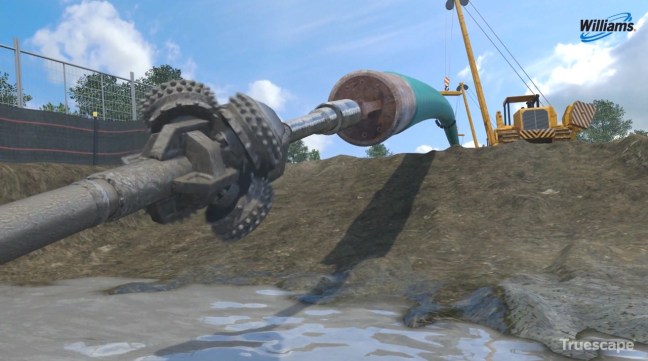In order for pipelines to transport the energy we need across the country, they are sometimes built across rivers, highways or other features where traditional open-cut pipeline construction isn’t feasible.
In these cases, pipeline companies like Williams sometimes use a technically advanced construction method known as horizontal directional drilling (HDD).
Horizontal directional drilling is a “trenchless” construction method that, in the simplest terms, involves drilling a path underneath an obstacle (like a road) and threading the pipeline underneath.
Williams has developed an animated video to more clearly illustrate how horizontal directional drilling construction takes place.
https://williams.wistia.com/medias/hhx9qs2sty?embedType=iframe&seo=false&videoWidth=600
Horizontal directional drilling technology has been utilized for short or great distances. Installation lengths of up to 6,500 feet have been successfully installed with pipe diameters as large as 48 inches. Although directional drilling was originally used primarily through loose soils, more and more crossings are being undertaken through gravel, cobble, glacial till and hard rock.
Williams has managed the successful installation of numerous trenchless crossings across the country. This includes the installation of the longest successful 24-inch horizontal directional drill (6,041 feet) under Jordan Lake in North Carolina in 1998.
It is important to note that while Williams considers horizontal direction drilling an effective tool, HDD success requires a disciplined approach to determining when and where the HDD crossing method is appropriate. The geography and geology of the location must be carefully considered before committing to HDD. A thorough, comprehensive trenchless analysis is performed to outline the parameters and feasibility of each proposed HDD crossing. 
